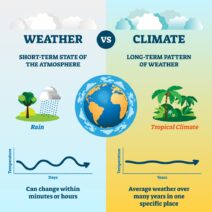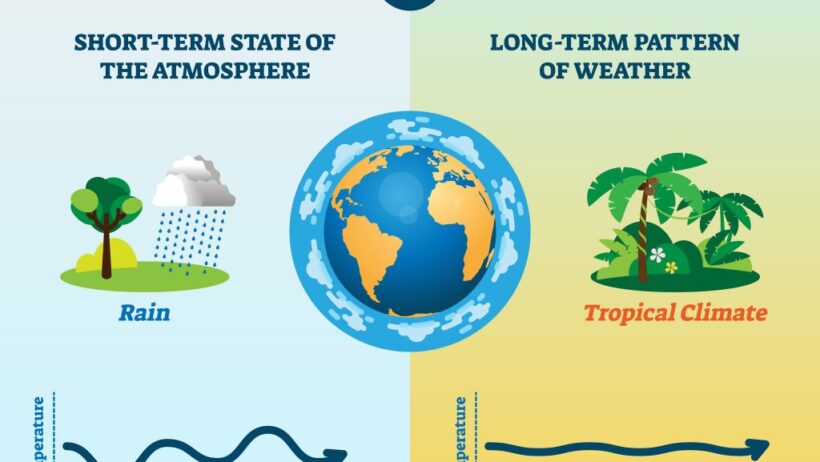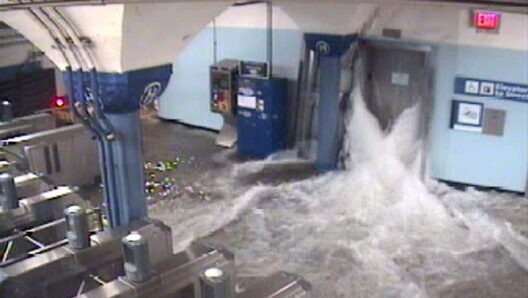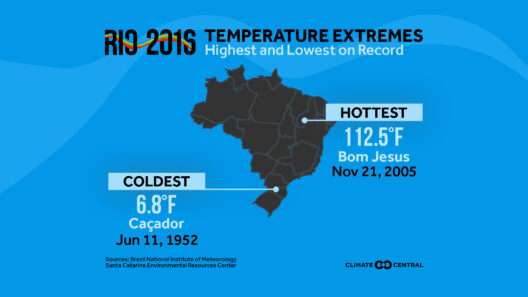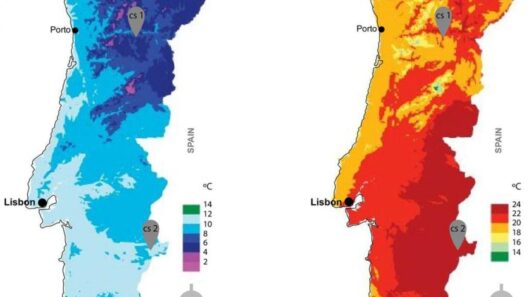The intricate tapestry of our planet’s atmospheric phenomena often leads individuals to conflate two fundamental concepts: weather and climate. While both pertain to atmospheric conditions, their temporal scales and implications diverge significantly. Understanding this distinction is essential not only for fostering scientific literacy but also for addressing pressing environmental issues facing our world today.
Weather can be defined as the short-term state of the atmosphere at a specific place and time. It encompasses a multitude of variables including temperature, humidity, precipitation, wind speed, and atmospheric pressure. For instance, the weather on a summer afternoon might present as warm and sunny, while a winter morning could manifest as frigid and snowy. These conditions fluctuate rapidly, changing from one moment to the next, influenced by a variety of factors such as geographical location, season, and specific meteorological events.
In stark contrast, climate refers to the long-term average of weather patterns over extended periods—typically 30 years or more—across a particular region. It is through climate that we categorize geographic areas into temperate, tropical, arid, and polar, among other classifications. This overarching framework allows scientists and policymakers to recognize trends and shifts, enabling them to understand regional and global biodiversity, agricultural viability, and resource management.
The distinction between weather and climate is not merely academic; it underscores a profound societal concern. For example, the recent surge in extreme weather events—hurricanes, floods, droughts—has incited discussions about climate change and its implications for mankind. When extreme weather patterns arise, the immediate response often skews towards short-term reactions to these vivid manifestations—what many perceive as weather. Yet, the underlying cause and effect are deeply rooted in climate change, which necessitates a structural understanding of atmospheric science and human interaction with the environment.
One may ask: what drives the observable differences between weather and climate? The roots lie primarily in the atmospheric dynamics and the Earth’s own systems. Weather is influenced by localized phenomena, such as frontal systems, solar radiation, and ocean currents. Conversely, climate is shaped by broader influences including tectonic activity, solar cycles, and anthropogenic factors, such as greenhouse gas emissions and deforestation. These elements play a crucial role in forming long-term patterns and shifts.
Consider the impact of climate change on weather patterns. Over recent decades, elevating global temperatures have led to alterations in precipitation patterns, increased humidity, and more frequent and severe weather events. The correlation is not incidental; warming oceans can exacerbate the intensity of hurricanes and tropical storms, leading to disastrous consequences for coastal communities. Furthermore, prolonged drought conditions can emerge from shifts in atmospheric circulation, reflecting how intricately weather and climate are interwoven.
A common observation is that many people fail to perceive the ramifications of climate change until extreme weather events strike close to home. This response often stems from a cognitive bias known as the “availability heuristic,” wherein individuals judge the probability of events based on how easily examples come to mind. Thus, when a devastating hurricane strikes, it evokes immediate concern and action—yet, the incremental changes wrought by long-term climate shifts may not provoke the same urgency. This misconception can lead—if unchecked—to a perilous complacency about the urgency of addressing climate issues.
The emotional weight attached to weather phenomena also contributes to the fascination with these concepts. Weather, in its unpredictable and ephemeral essence, evokes a palpable sense of wonder. Thunderstorms can be thrilling yet terrifying; blizzards can transform the mundane into a winter wonderland. Conversely, climate, while arguably less thrilling, possesses an apocalyptic undercurrent. Long-term climate trends evoke concerns about sustainability, biodiversity, and the very fabric of human society. The juxtaposition of transient weather events and the slow creep of climate change creates an inherent tension, stirring public dialogue on environmental stewardship.
Educating the public on the differences between weather and climate is imperative for fostering a well-informed citizenry. Institutions and educators should focus on elucidating these concepts through outreach programs, emphasizing scientific literacy and critical thinking. Utilizing data visualization, infographics, and community engagement can make the differences clearer and more relatable. Knowledge empowers individuals to advocate for sustainable practices and policy changes, ultimately addressing the broader implications of climate change.
In summation, the distinction between weather and climate is vital for an understanding of our planet’s atmosphere and the challenges we face in an era marked by environmental change. Recognizing that weather constitutes the immediate atmospheric conditions while climate represents long-term patterns aids individuals in grappling with the nuances of climate change. Cultivating this understanding is not merely an academic exercise; it is essential for prompting action, galvanizing grassroots movements, and encouraging sound environmental policies. Only through informed citizenry can society tackle the critical issues at hand. The future of our planet hinges on our ability to see the intricate connections between the fleeting and the enduring, collectively advocating for a sustainable world in which both weather and climate can thrive harmoniously.


